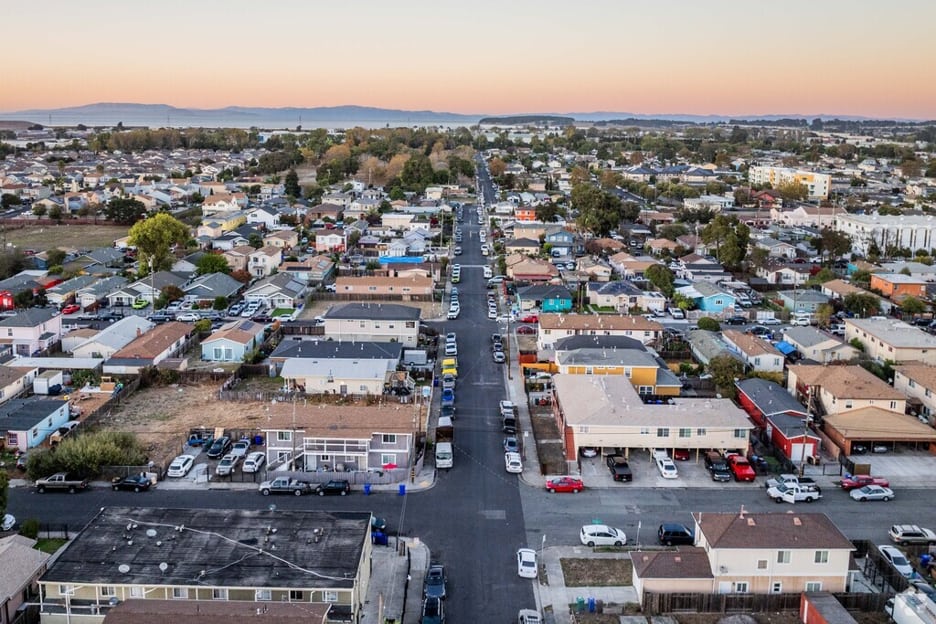Richmond North Richmond Building Regulations: A Fresh Perspective on Navigating Local Construction Standards
Nestled in the heart of London’s prestigious borough, Richmond North Richmond stands as an area of both natural beauty and architectural charm. Whether you’re a homeowner looking to enhance your space with a renovation, a developer seeking to create a new build, or an architect working to blend modern design with historical character, understanding the intricate building regulations of Richmond North Richmond is essential. In this article, we will explore the specifics of these regulations, providing an original, insightful look at what you need to know to ensure your project aligns with the local rules while enhancing the community’s aesthetic and sustainability.
Why Richmond North Richmond Building Regulations Matter
Richmond North Richmond is known for its green spaces, riverside views, and a unique blend of traditional and contemporary architecture. Preserving the distinct character of the area is vital, which is why building regulations play such an integral role in every construction project. These regulations are not only about compliance—they’re about protecting the safety, quality, and longevity of the structures that will shape the community for years to come.
The local council places a strong emphasis on ensuring that new builds and alterations blend harmoniously with the existing environment. The character of Richmond North Richmond, with its mixture of period homes and modern structures, requires a delicate balance between contemporary living and historical preservation. Understanding the role of building regulations in this context is key to ensuring that your development contributes positively to the area, rather than disrupting its character or quality of life.
Key Aspects of Richmond North Richmond’s Building Regulations
Richmond North Richmond’s building regulations encompass a wide range of rules and standards, all of which ensure that any development undertaken is both safe and sustainable. Below are some of the most important aspects to consider:
1. Structural Integrity and Safety Standards
Safety is paramount when constructing or modifying any building. The regulations include detailed requirements for ensuring the structural stability of buildings, including standards for foundations, load-bearing walls, and roof structures. These regulations are particularly important in areas like Richmond North Richmond, where many properties are situated on land with varying topography or near watercourses, which may require additional precautions.
Special considerations are also in place for properties near conservation areas or historical landmarks, where additional measures may be necessary to preserve the integrity of both the structure and its surroundings.
2. Fire Safety Regulations
Ensuring that a building is protected from fire hazards is another key aspect of the building regulations. Richmond North Richmond is home to many older buildings, which may not have been designed with modern fire safety standards in mind. Renovating or extending these buildings often requires careful planning to meet current fire safety standards. This may involve installing fire-resistant materials, proper fire exits, and advanced fire alarm systems.
3. Energy Efficiency and Sustainability
As part of Richmond’s commitment to environmental sustainability, building regulations in the area also emphasize energy efficiency. Whether it’s through improved insulation, the installation of energy-efficient heating systems, or the use of renewable energy sources, the goal is to reduce the environmental impact of each building. New developments, in particular, are expected to meet stringent criteria that support energy conservation and minimize carbon footprints.
Richmond North Richmond is an area that values green initiatives, so incorporating eco-friendly elements into your project could help in both the approval process and in increasing the long-term value of your property.
4. Accessibility and Inclusivity
In line with national standards and local priorities, Richmond North Richmond’s building regulations require that buildings be accessible to all, including those with disabilities. This includes regulations for ramps, doorways, and hallways to accommodate people with mobility challenges. While this might be more relevant for commercial or public buildings, it is still important for residential properties to adhere to these guidelines, especially if significant renovations are being made.
5. Aesthetic Considerations in Conservation Areas
One of the most distinctive features of Richmond North Richmond is its wealth of conservation areas. Whether it’s the charming Victorian terraces, Georgian homes, or riverside cottages, the area has a rich architectural heritage that must be preserved. The building regulations include specific rules for developments in conservation areas, which may place restrictions on the types of materials used, the height of structures, and the overall appearance of the project.
Homeowners and developers planning renovations or new builds in these areas should be prepared to submit detailed plans that demonstrate how the project will complement the surrounding environment. This often requires input from conservation officers, architectural historians, and local planners.
6. Planning Permission vs. Building Regulations
It’s important to differentiate between planning permission and building regulations. Planning permission is required when your project affects the appearance, use, or external dimensions of your property, such as adding an extension, changing the use of a building, or constructing new buildings.
On the other hand, building regulations govern the safety, quality, and sustainability of the building process itself. While planning permission addresses broader concerns like aesthetics and land use, building regulations focus on structural soundness, safety, and environmental impact.
In Richmond North Richmond, both planning permission and building regulations must be met, and failure to comply with either can lead to fines, demolition orders, or other legal consequences.
How to Navigate the Richmond North Richmond Building Regulations Process
Successfully navigating the building regulations process in Richmond North Richmond can seem daunting, but with careful planning, the right advice, and an understanding of the regulations, it can be a seamless experience.
1. Engage Early with the Local Authority
Before beginning any construction or renovation work, it’s advisable to consult with Richmond Borough Council’s planning department. This early engagement helps to identify any potential issues and provides clarity on which regulations will apply to your project. This is especially critical if your property lies within a conservation area or has listed status, as additional restrictions may apply.
2. Hire Experienced Professionals
Working with an architects, surveyor, or builder who is familiar with the local building regulations is key to ensuring that your project runs smoothly. These professionals can guide you through the often-complex submission process and provide valuable insights into how to meet the regulations while achieving your design goals.
3. Understand the Application Process
The process typically involves submitting detailed plans that outline the scope of the work, materials to be used, and how the project will meet safety and environmental standards. You may also need to provide calculations from structural engineers or environmental consultants. Once submitted, the council will assess your plans, conduct site inspections, and provide feedback or approval.
Conclusion: Making Your Richmond North Richmond Project a Success
In conclusion, building regulations in Richmond North Richmond play a crucial role in maintaining the safety, character, and environmental sustainability of the area. By understanding these regulations, working with local authorities and experienced professionals, and adhering to the rules, homeowners and developers can ensure their projects are successful and harmonious with the surroundings.
The process may seem intricate, but it provides an opportunity to create buildings that are not only functional and beautiful but also safe, sustainable, and sensitive to the local environment. Whether you’re looking to enhance your home or embark on a new development, navigating Richmond North Richmond’s building regulations with confidence is the key to achieving a project that you and the community can be proud of.



No responses yet